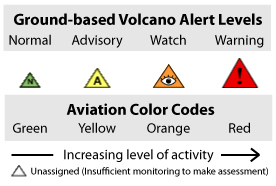The North American continent is home to several so-called 'supervolcanoes' (a term that is lamented by many geologists and volcanologists) such as Wyoming's Yellowstone Caldera, California's Long Valley Caldera, and New Mexico's Valles Caldera. Now, Utah joins the list of states that are host to some of the biggest eruptions in Earth's history.
After 30 years of intense research, collecting rock samples, creating gravimetric maps, and studying ash layers, geologists have zeroed in on the epicenter of what is thought to be one of the largest eruptions of all time in the US, bigger than even the largest eruptions of Yellowstone. But don't worry, scientists say that it is unlikely to ever erupt again, unlike Yellowstone, or Long Valley (the Valles Caldera also has the potential to reactivate, but is generally the quieter of the three). The magmatic system that produced these eruptions has long since become extinct.
The eruption was so large, that ash layers can be recorded as far away as Nebraska! Wildlife and plants from over 30 million years ago were preserved in these layers.
The epicenter is in an area known as Wah-wah Springs, in Western Utah, and extends to Eastern Nevada. This would make it one of the largest supervolcanoes on the planet (discovered so far at least), and one of the largest in North America.
Screenshot of Utah/Nevada Supervolcano eruption area and associated caldera from KSL.com web report.
Many mountain ranges and volcanic rocks in the area were associated with the White Rock Caldera, and it remains to be seen whether or not this volcano is related to it. Utah and Nevada lay on top of the Rio Grande Rift, an area of the United States that is spreading apart, rather than plates slamming together and subducting like the Pacific Plate and its associated Pacific Ring of Fire. Volcanoes along this rift do not erupt as often as their pacific neighbors, but when they do, the eruptions are typically larger and more devastating, and obviously foster the creation of some mantle plumes (although in the arena of science, this would need to be more thoroughly researched, as mantle plumes are still somewhat controversial, despite a lot of evidence).
This recent discovery adds to ever increasing data about the eruptive history of our planet, and will undoubtedly fill in some gaps and resolve some mysteries that have puzzled geologists for some time.
This recent discovery adds to ever increasing data about the eruptive history of our planet, and will undoubtedly fill in some gaps and resolve some mysteries that have puzzled geologists for some time.
Article cited from :
http://volcanoscience.blogspot.com/2013/12/new-supervolcano-discovered-in-utah.html













